Table of Contents
What is the Meaning of Sundarban ?
Sundarban formally known as “Sundarbunds” translates to a beautiful forest where “sundar” means beautiful and “ban” means forest. It is also said that “sundari” is the name of the mangrove trees that are found in the region.
But, just as “cape of good hope” it is named beautifully to not identify this forest as a dangerous one. From an aerial view, this forest stands out as nature’s perfect gift. Making us realise how great of an artist God is. This forest stretches across the borders between India and Bangladesh with a cluster of low-lying islands in the Bay of Bengal.
How Many Islands Are There in Sundarbans?
There are 102 islands in this area from which only 52 islands are inhabited and the remaining are habitat. With a whopping 40,000 sq km, this active delta is a nature’s marvel that seems to awe any visitor lurking over it in an aircraft and isn’t blind I must say. Stretching across from the Hooghly River in West Bengal of India to the Baleswar River in Bangladesh.50% of the people living there earn their livelihood through the water. The high amount of salt in the water bodies around the islands makes it impossible for them to do any sort of agriculture in that area. So, most people earn by fishing and trading honey.
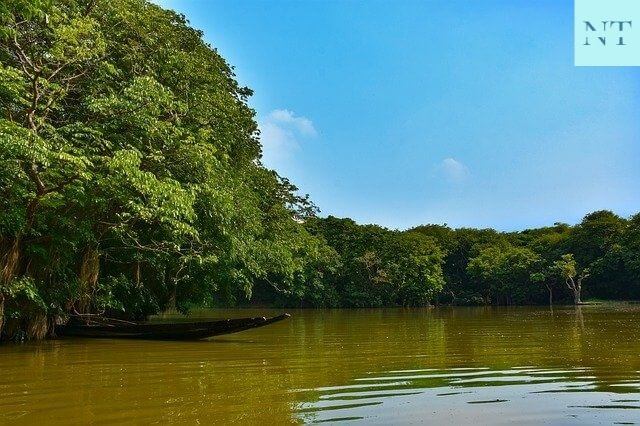
This forest might look like a perfect spot for hiking or a camping site but the locals say otherwise. Filled with a vast range of flora and fauna the animals in these areas are dangerous to such an extent that this area is not habitable by humans at all. Thousands of people have lost their lives trying to venture out in the woods of this beautiful and dangerous forest in the quest to find honey or just leisure.
Where Sundarban is Exactly Located?
| Co-ordinates | 21.95°N, 89.18°W |
| Population | Approx. 4.44 million |
| Area(including land and water) | 3,860 miles (3-5 in Bangladesh) |
| Gov. Bodies | Gov. Of India, Gov. Of Bangladesh |
| Importance | Habitat for globally endangered species. |
| UNESCO World Heritage Site | 7th Dec 1997 |
Is Sundarban a Part of The Largest Delta in The World ?
Yes! The Sundarbans are part of the largest delta in the world, formed by the largest rivers found in India i.e Ganges, Brahmaputra, and Meghna. The Sundarbans are a stream of waterways, muddy plains, and forested islands at the trenches of the Bay of Bengal. The Sundarbans are a group of low-lying islands in the Bay of Bengal, located between India and Bangladesh, they are known for their unique mangrove forests and a wide variety of wildlife untouched by man.The Sundarbans are a group of small, low islands that are each less than five metres in height in the delta of the Ganga-Brahmaputra-Meghna River.
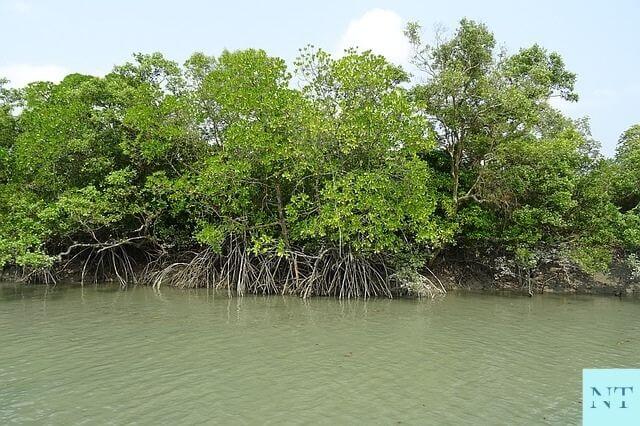
Is Sundarban a Heritage Site?
The Sundarbans, stretching across the corridor of southwestern Bangladesh and southeastern India, are the largest surviving range of mangrove timbers in the world. Not only is the Sundarbans the largest mangrove ecosystem in the world but it also consists of the world’s largest mangrove timbers in the swash delta and it also serves as the home to one of India’s most iconic wildlife, the Royal Bengal Tiger.
The Sundarbans mangrove timber is one of the largest in the world, it is located in the delta of the Ganges, Brahmaputra, and Meghna gutters in the Bay of Bengal. It sits near the border of India’s and has secured its position as one of the World Heritage Spots of Sundarbans in 1987.
Crossed by a complex network of tidal aqueducts, slush banks and atomic islets of swab-tolerant mangrove timbers, the point is an excellent illustration of an ongoing ecological process.
Serving as a niche for encyclopedically risked species this place is of pivotal significance on a global scale.
The Sundarbans Tiger Reserve (Sundarban Sanctuaries)
These timbers have been saved by two countries as a public demesne for decades, indeed though there’s a huge quantum of mortal population in the north. Important of the area has long been a timber reserve, but conservation endeavours in India were boosted as they established the Sundarbans Tiger Sanctuary in 1973.
The timber that’s in the Indian borders is divided into the Sundarbans Tiger Reserve and the 24th Parganas Forest Site in the South, and together with the timbers in Bangladesh, it’s the only mangrove timber being in the world that’s suitable for barracuda. The Sundarbans Nature Reserve Forest (SRF), positioned in the southwest Bangladesh in the middle of Baleshwar River to the east and Harinbanga to the west, framed by the Bay of Bengal, is the largest known conterminous mangrove timber in the entire world.
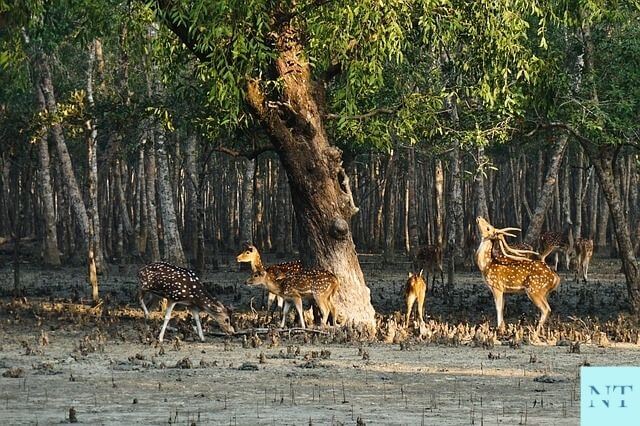
Geographical Spread of Sundarban
Roughly 35 percent of the premises are located in India, and the rest are located in Bangladesh. This known demesne covers an area of about square kilometres which isapprox. square country miles and is located at the opening of the Ganges and Brahmaputra Rivers, separating India and Bangladesh, skirting the state of the Bay of Bengal.
The reserve covers roughly 15 of the Sundarbans mangroves, including the Sundarbans National Park and Sajnekhali Wildlife Sanctuary in West Bengal, East Sundarbans, South Sundarbans, and Sundarbans in Bangladesh Western Wildlife Sanctuary. The remaining timbers and the Sundarban mangroves play a veritably important part in furnishing the niche for these risked barracuda. Mangrove timbers account for roughly about two-fifths of the total land area in the Sundarban area, and water bodies cover roughly about half of the area.
A study claims that the ecologically sensitive Sundarbans region in India and Bangladesh has lost roughly 24.55 percentage of mangroves which roughly accounts to136.77 sq km due to soil corrosion and natural causes over the once every three decades. As the officers estimate the damage done to the Sundarban mangroves by Cyclone Amphan, new exploration shows that the ecologically sensitive region in India and Bangladesh has lost 24.55 percent of mangroves, roughly about136.77 sq km.
The mangrove dominated Delta of Ganges, the Sundarbans, forms a posh ecosystem that has one among the three largest mangrove tracts within the whole world. It crosses the home from the Hooghly River in the Indian state of West Bengal to the Baleswar River in the Khulna region of Bangladesh. A network of arms, tidal, and kudos crossed by multiple channels, circles the flat, densely forested, swampy islets. It’s the delta of two potent Indian gutters, the Ganges and Brahmaputra, which flow into the Bengal receptacle.
Sundarban Forest – Flora And Fauna
The Sundarban Forest is situated in Bangladesh’s southern section, in the massive Bay of Bengal delta created by the confluence of the Hooghly and Padma rivers, both of which are the headwaters of the Ganges, Brahmaputra, and Meghna.
The Sundarban swampy freshwater forests are located between the moist deciduous forests of the low Ganges plains and the surrounding Sundarbans mangroves bordering the Bay of Bengal. The Sundarbans, formerly called Sunderbund’s, is a vast forested area and salt swamp that forms the bottom part of the Ganges- Brahmaputra delta in the southeastern state of West Bengal, northeastern India, and southern Bangladesh.
Bangladesh Sundarbans is a part of the delta of the largest river in the world at the mouth of the Ganges and Brahmaputra. The Earth was a part of the largest deltas in the world, formed by the deposits of these three large rivers: the Ganges, Brahmaputra, and Meghna, and covering the Bengal basin the land was shaped and the flow of an action that resulted in a distinctive physiology.
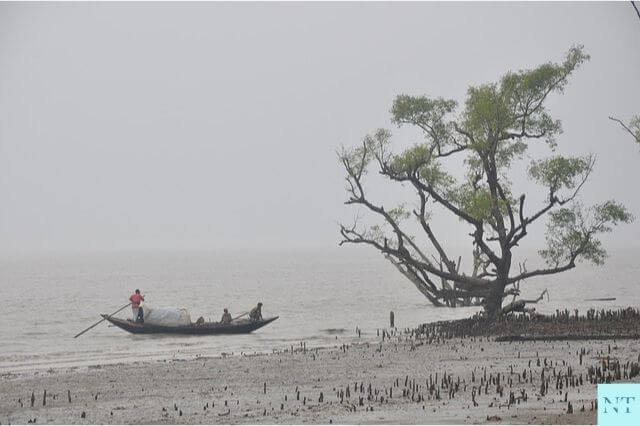
The Sundarban is a delta mangrove timber formed by the cofluence of the three main of indiai.e Swash Ganges, Brahmaputra, and Megna in the Bay of Bengal making it rich in foliage and fauna. The history of Sundarbans is as fascinating as its name Sundarbans, the world’s largest conterminous mangrove timber, is located in the east of West Bengal, India, and Bangladesh. Sundari is the main mangrove species of Sundarbans in India and Bangladesh. The Sundari tree, Heritiera form, is most presumably named after the timber and is characteristic of the thick foliage of the mangrove.
Inside the wood, open spaces are enthralled by an aureum; on the western side, Bruguiera sexangula, agallocha, Rhizophora apiculata, Rhizophora mucronata prevail, and also in the far west, two species unite-Ceriops decandra and Aegiceras corniculatum. The shops in these mangrove timber differs in three distinctive ecological zones oligohaline, mesohaline, and polyaniline zones.
In addition to the Royal Bengal barracuda, other creatures and marine life that live in this place are conforming of fishing pussycats, macaques, leopard pussycats, Indian slate mongoose, wild boar, flying fox, pangolin, and Indian slate mongoose. In addition to the Bengal barracuda, there are numerous other main species of wild creatures in this demesne macaques, Indian slate mongoose, leopard pussycats, Ridley ocean turtle, wild boar, timber cat, fox, flying fox, fishing cat, virgin, pangolin and numerous.
Sunderban National Park
Sunderban National Park houses multiple effects like biosphere reserves, a public demesne and a barracuda reserve showing us the wealth of this mangrove ecosystem. The foliage in Thunderbones is a sticky rainforest with a ascendance of mangroves. The Sundarban consists of a unique ecosystem of mangroves and is home to species of wildlife.
Of these, 15 species of mammals, 8 species of catcalls, and 17 other species of reptiles are among the most rare and exposed species in India. In addition to the Bengal barracuda, the only type of its species acclimated to the mangrove terrain, the timber is home to a wide variety of wildlife, including rare species similar as the Indian python and the Irrawaddy dolphins.
Sundarbans are of universal significance for exposed species including the royal Bengal barracuda, the Ganges and Irrawaddy dolphins, estuarine crocodiles and the risked aboriginal swash turtles named Batagur baska. It’s also known as a kingfisher paradise due to the presence of 10 types of the 12 kingfisher species in the region. Sundarban is also known for its marine life and is veritably rich in thataspect.Gangasagar, located on an islet in Sundarban, enchants excursionists with its beautiful strands. The Sundarbans is a delta region in southern Bangladesh. It consists of the world’s largest mangrove timber, covering roughly about square kilometres. The Sundarbans delta is defended by the Bangladesh Forest Department and is among the largest natural wildlife reserves in Asia.
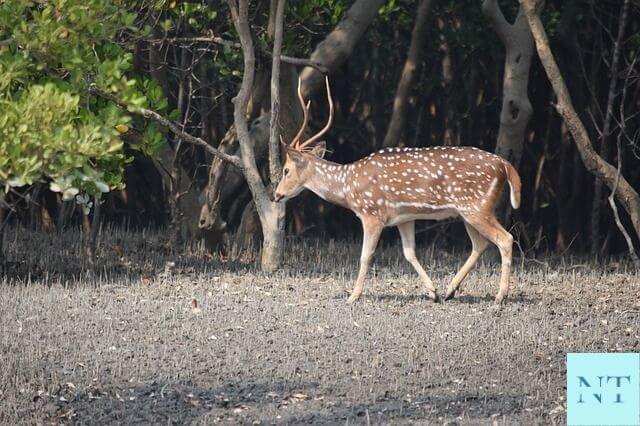
Sundarban Delta is an important part of Bengal culture and heritage, which has made it delicate for the government to clear it for canvas disquisition or other development.
The timbers are frequently swamped during the thunderstorm season and the townies there are floundering through this season.
In the Sundarbans, a vast mangrove timber in the delta of the Ganges and Brahmaputra gutters, lives a heritage that makes these countries stand out and appeal it’s callers.
There are people who move from vill to vill to seek out stories of lives lived at the edge, careening between tradition and gradational change.
Sundarban Mangroves
The Sundarbans is a place where mangroves grow to heights that outdo the road lights and fog also obscuring the horizon with a gentle reach of slate-green mist. It’s a place where barracuda bat, fishers ply their trade on fragile boats all day cooking on it for lunch, and children bathe in clear water before returning home to study at divisions lit by kerosene lights. Exposed Royal Bengal barracuda live then as well as thousands of other species-from crocodiles to kingfishers-all participating in one fragile ecosystem.
Prayers and desires for rain are offered to the Ganga swash before it flows into the Bay of Bengal. The Ganga is worshipped as a goddess and the swash is known as Maa which translates to Mother.
The Sundarbans are a unique ecosystem that awes its callers and it also has been declared as a UNESCO World Heritage Site in 1997. There are five UNESCO spots in Bangladesh, and one is in this vast stretch of timber of Sundarbans, which is also one of many mangrove timbers on earth.
Currently there are a lot of eyes on it as a UNESCO World Heritage Site as climate change and global warming issues are affecting its ecosystem.
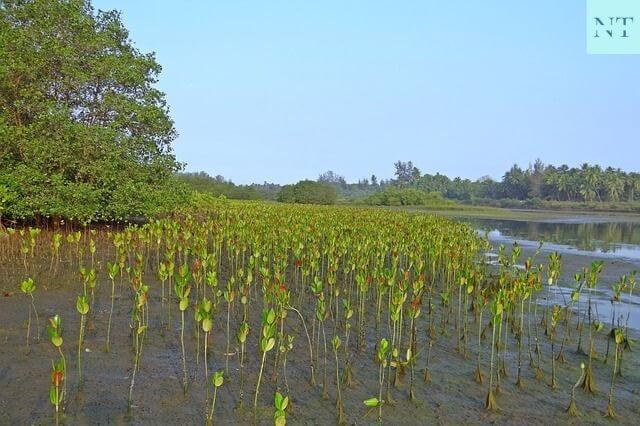
Sundarban is a quarter in the Indian state of West Bengal.
Sundarban is an artificial and densely populated quarter in the region of West Bengal. It’s home to the Sundarbans, is the largest tidal halophytic mangrove timbers in the world.
The Sundarbans area, covering about square kilometres, comprises delta alluvial plains, with small hilly areas dispersed along the swash banks. The average elevation is approx. only 2 metres. The whole area lies within the Ganges Delta of India’s Bengal receptacle with an elevation dwindling from the north tosouth.This land has been home to numerous Bangladeshi fishers for centuries. The timber covers about square country miles.
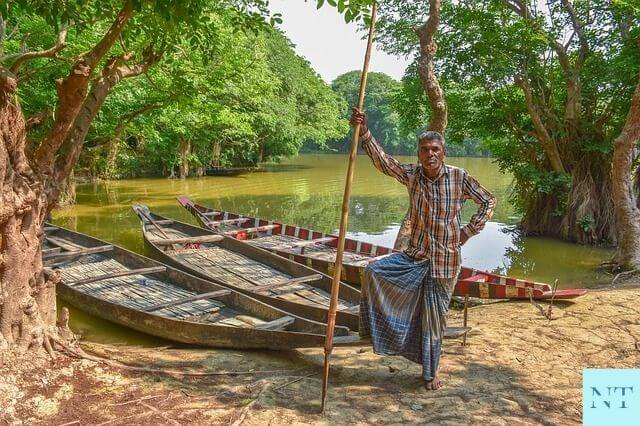
Sundarban is one of the most beautiful corridors of India. Not numerous people know about this part of India, but it’s veritably important for Indian Culture.This place is notorious for its mangrove timbers and also for being an important part of Indian culture.
Not everyone knows that the Sundarbans are a veritably significant part of recent Indian history and they’re also an intriguing destination to visit if you ever get the chance.
Sundarban represents the place from which we evolved. With a wide variety of foliage and fauna it possesses a way to show us a brief idea about how our ancestors lived. We all should take an action to save these natural prodigies and cherish.
Suggested Reading:
| Go To Home Page | Click Here |
| Mongabay Study Reference | Click Here |
| Wikipedia Reference | Click Here |
| West Bengal Tourism Reference | Click Here |
| UNESCO World Heritage Site Refernece | Click Here |
